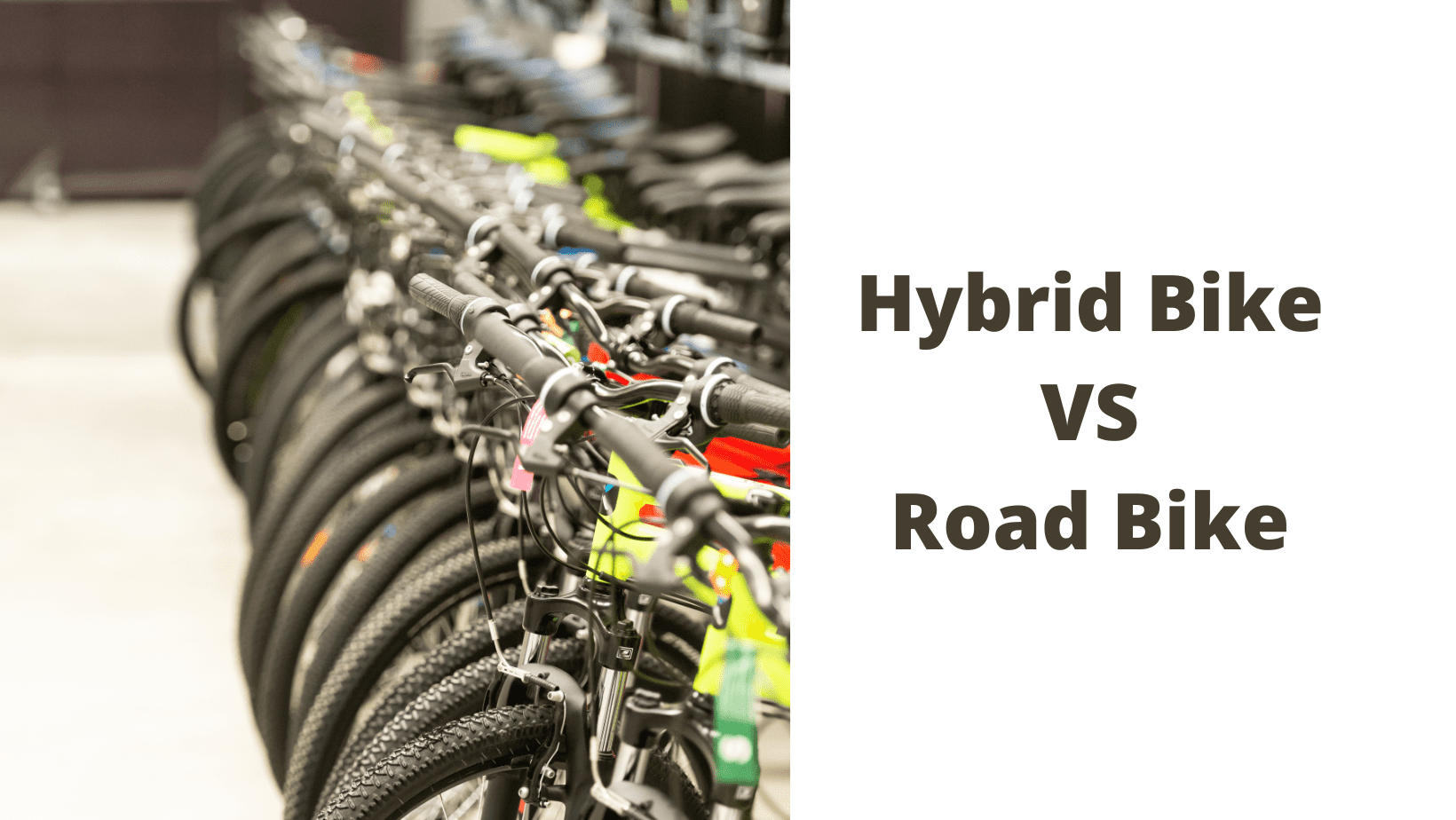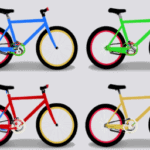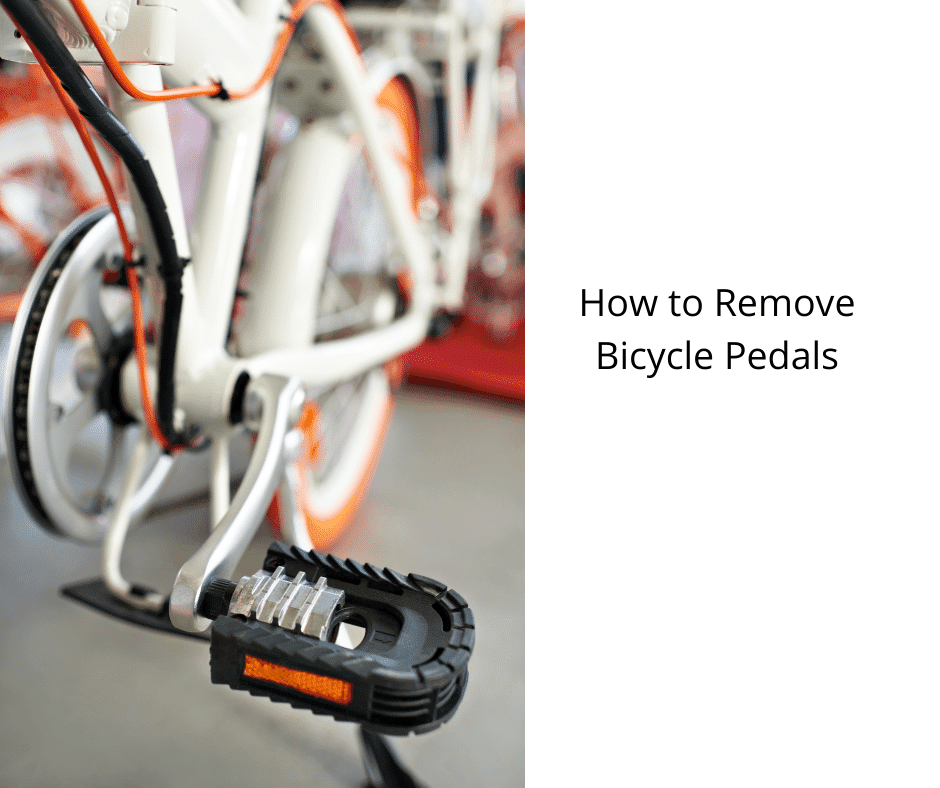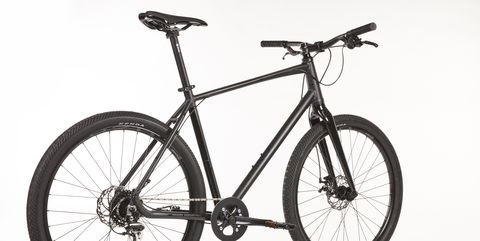It’s undeniable that getting to and from work can be a major inconvenience. The traffic seems to intensify with each passing day, and parking fees are on an endless rise. However, imagine if there was a solution to sidestep all these issues. Picture the possibility of commuting effortlessly and with style, using a hybrid bike or a road bike. It might seem far-fetched, but it’s absolutely achievable! In this piece, we’ll delve into a comparison between hybrid bikes and road bikes to assist you in making an informed decision on the one that best suits your needs.
Bikes on Cushioned Seats
Hybrid bikes are a great choice for those who want to get into cycling or enjoy occasional rides on pavement and off-road trails. They are more comfortable than road bikes, due to their cushioned seats and upright handlebars, and they are more suited for long-distance riding.
However, road bikes tend to be faster than hybrid bikes, due to their lighter weight and thinner tires. Hybrid bikes are also a good choice for those who want to cycle on both paved and unpaved surfaces, as they are equipped with robust gears that can handle rough terrain. Whether you’re looking for a leisurely ride around the neighborhood or an adventurous trek through the woods, a hybrid bike is a great option.
More Comfortable Hybrid Bikes
Hybrid bikes are more comfortable than road bikes due to their cushioned seats and are more suitable for long-distance cycling, however, road bikes tend to be faster than hybrid bikes. Hybrid ones come with a flat or upright handlebar providing a comfortable riding position. They are designed for cycling up on steep hills, which means they have gears that are robust and not meant for high speeds as opposed to road bikes.
Road bikes have a drop handlebar that enables the rider to go fast as it cuts down on air resistance. They also have lighter frames and thinner tires because they’re made for smooth pavement. The benefit of owning a road bike is that you can use it for racing or going on long rides smoothly. You would want a hybrid bike if you value comfort over speed and efficiency and if you’ll be riding on different surfaces like gravel or dirt roads. If you live in an area with lots of hills, then a hybrid bike can be a better option for you as well. In short, it really depends on what your priorities are when choosing between a hybrid bike or a road bike.
Road and Hybrid Bikes Advantages and Disadvantages
Rand hybrid bikes both have their advantages and disadvantages, it really depends on the needs of the rider as to which type of bike would be more suitable. Road bikes are typically faster than hybrid bikes due to their lighter weight and more aerodynamic design, making them better suited for racing or long-distance cycling.
However, hybrid bikes are usually more comfortable to ride, thanks to their cushioned seats and upright handlebars, which provide a relaxed riding position. Additionally, hybrid bikes are designed for cycling up steep hills, so they come equipped with robust gears that can handle the extra strain. Ultimately, it’s up to the rider to decide whether a road bike or hybrid bike is best for their needs.
Hybrid Bikes Compared to Road Bikes
Though they are often seen as a single entity, bicycles come in a wide variety of shapes and sizes, each designed for a specific purpose. Road bikes, for example, are built with speed in mind, and their sleek frames and simple construction make them ideal for quick journeys. Mountain bikes, on the other hand, are designed for off-road riding, and their rugged tires and suspension systems allow them to tackle even the most challenging terrain. In recent years, however, a new type of bike has begun to emerge, one that combines the best features of both road and mountain bikes: the hybrid bike.

Designed for both on- and off-road riding, hybrid bikes offer the rider a versatile option that is perfect for both city streets and dirt trails. Thanks to their robust construction, hybrid bikes are able to take on more challenges than traditional road bikes, while still offering the same level of comfort and speed.
As a result, they have become increasingly popular in recent years, with more and more people looking for a bike that can keep up with their active lifestyle. Whether you’re an experienced cyclist or just getting started, a hybrid bike is an ideal choice for anyone looking for a versatile and rugged bicycle.
Road Bikes Compared to Hybrid Bikes Main Characteristics
Road bikes are the way to go when you’re looking for speed and efficiency. They’re built for paved roads and smooth pavement, and they can get you to your destination quickly. But not all road bikes are created equal. There are many different types of road bikes, each with its own set of features.
Touring bikes are designed for long-distance riding on paved roads, while cyclocross bikes are built for a mix of paved and unpaved surfaces. And within each type of road bike, there are even more variations. Some road bikes have drop-down handlebars, while others have flat handlebars. Some have deep-dish wheels, while others have shallow wheels. With so many options to choose from, it can be tough to know which road bike is right for you. But with a little research, you’ll be able to find the perfect bike for your needs.
How Fast Do Hybrid and Road Bikes Go?
A hybrid bike is a cross between a road bike and a mountain bike, designed to provide the best of both worlds in terms of speed and comfort. Hybrid bikes are generally slower than road bikes, as they are heavier and have wider tires that create more rolling resistance.
However, they are more comfortable riding for long distances, as they allow the rider to sit in a more upright position. In comparison, road bikes are designed for speed, with lightweight construction and narrow wheels that reduce wind drag.
Road bikes also have less suspension than mountain bikes, which makes them unsuitable for riding on rough terrain but ideal for smooth surfaces such as pavement. Ultimately, the type of bike you choose should depend on your intended use. If you’re looking to go fast, a road bike is the better choice. But if you’re looking for a bike that can handle long rides without leaving you feeling sore, a hybrid bike is the way to go.
Road Bike vs Hybrid Bike Frame Weigh
The weight of a bike is an important factor to consider, especially if you plan on doing a lot of uphill cycling. Hybrid bikes are usually heavier than road bikes because they have a thicker frame that can support more weight. Additionally, the cost saved from not using premium lightweight frames is invested in other components of the bike, increasing overall performance.
Road bikes have sleek frames that are made from lightweight materials, such as carbon fiber. They also have lighter chunky wheels and don’t waste space on extra components like heavy suspension forks. As a result, road bikes tend to be lighter than other types of bikes with the same price range.
Road Bikes Compared to Hybrid Bikes Tires
The design of bike tires is a complex process that takes into account the many different components of the bicycle. For example, hybrid bicycles typically feature chunky tires that are designed for use on paved surfaces. These tires help to provide balance and a smooth ride on flat roads.
In contrast, road bikes often feature skinny tires that offer superior aerodynamics and off-road traction. Ultimately, the type of tire you choose should be based on your own preferences and riding style.
Road Bike Compared to Hybrid Bike Handlebars
The most obvious difference between a road bike and a hybrid bike is the change in handlebars’ shape. The hybrid bike has flat handlebars, as compared to the drop handlebar on a road bike. These flat bars let you sit straight and in a more upright position, which helps you maintain a comfortable riding posture in long-distance rides.
Road bikes have drop handlebars primarily, making a major difference when it comes to the overall build. They have a horizontal frame in the middle, and then the ends have loops. The bike’s geometry helps riders get a better grip on the dropped handlebars as they can position their hands anywhere on the drop bars, depending on their ease. While both types of bikes are able to travel at high speeds, road bikes are generally faster because of their lighter weight and more aerodynamic design.
In addition, road bikes typically have narrower tires, which reduces resistance and makes pedaling easier. However, hybrid bikes are more versatile and can be used for a variety of activities, such as commuting or running errands. Ultimately, the best type of bike depends on your individual needs and riding style.
Road or Hybrid Bikes Saddles
The saddle is one of the most important contact points between you and your bike. A comfortable saddle can make a big difference on long rides, while an uncomfortable one can ruin even the shortest trip. If you’re planning on doing a lot of riding, it’s important to choose a saddle that suits your needs.
Hybrid bikes usually have wider saddles that are designed for comfort. These saddles often have extra padding to provide support for your sit bones and prevent chafing. In contrast, road bike saddles are narrower and more lightweight. They’re designed to minimize friction and maximize pedaling efficiency.
So which type of saddle is right for you? If you’re planning on doing mostly short-to-medium rides, then a road bike saddle will probably be just fine. But if you’re looking for maximum comfort on long rides, then a hybrid bike saddle is the way to go.
Whichever type you choose, make sure to try out a few different models before making your final decision – what’s comfortable for one person might not be comfortable for another.
Hybrid Compared to Road Bike Gears
The gears of a bike are the hub of its mechanical system. The design and build quality of the gears determine the overall performance of the bike. Exact specifications may differ from model to model, as every model has a unique final purpose.
Generally, hybrid models feature gears that are more suitable for flat-road cycling, as they are designed to support the comfortable long-distance movement as opposed to road bikes. In addition, hybrid models often have a lower gear ratio than road bikes, which makes them easier to pedal uphill. However, this also means that hybrids can be slower on flat terrain. Ultimately, the type of gear system you choose should be based on your riding style and the terrain you’ll be riding on most often.
Pros of Hybrid Bikes
Hybrid bikes are a popular choice for cyclists who want the best of both worlds: the speed and efficiency of a road bike with the comfort and stability of a mountain bike. And while there are some drawbacks to hybrids, such as their higher price tag and heavier weight, there are also several advantages that make them worth considering.
One of the biggest benefits of hybrid bikes is their versatility. They can be ridden on almost any type of terrain, from city streets to gravel paths, making them ideal for cyclists who like to mix things up.
Additionally, hybrid bikes tend to have more comfortable riding positions than either road or mountain bikes, which can be a major plus for riders who suffer from back pain or another discomfort. With so many benefits, it’s no wonder that hybrid bikes have become one of the most popular choices among cyclists of all levels.
Drawbacks of Hybrid Bikes
While hybrid bikes offer a number of advantages, there are also some potential drawbacks to consider. One of the biggest disadvantages is that they can be more expensive than other types of bikes.
Hybrid bikes also tend to be heavier than road or mountain bikes, which can make them more difficult to ride uphill. Additionally, hybrid bikes typically have wider tires than road bikes, which can make them slower on paved surfaces.
Finally, while hybrids are designed for both paved and unpaved surfaces, they often don’t perform as well as dedicated mountain or road bikes on either type of terrain. Given these potential drawbacks, it’s important to decide whether a hybrid bike is a right choice for your riding needs.
Pros of Road Bikes
Road bikes are designed for speed and efficiency, making them a popular choice among competitive cyclists and serious amateurs alike. The narrow tires and dropped handlebars allow riders to slice through the air with minimal resistance, making road bikes ideal for long-distance riding.
In addition, road bikes tend to be relatively lightweight, making them easier to control on steep climbs and fast descents. And because they are designed to be ridden on pavement, road bikes typically have smooth gears that make it easy to maintain a consistent cadence. While road bikes can be less comfortable than other types of bicycles, they offer a level of performance that is hard to match. For those looking to ride faster and farther, a road bike is often the best choice.
Drawbacks of Road Bikes
Road bikes are a popular choice for many cyclists, but they also have some disadvantages. One of the biggest problems with road biking is the danger of being hit by a car.
Because road bikes are designed for speed, they often don’t have the same reflectors and lights as mountain bikes, making them harder for drivers to see. In addition, road bikes can be uncomfortable to ride on long journeys, as they lack the padded seats and suspension systems of mountain bikes.
Finally, road bikes are also more vulnerable to flats and punctures than other types of bicycles, as their thin tires offer less protection against sharp objects. Despite these drawbacks, road bikes continue to be a popular choice for many cyclists.
Which Type of Bike is Right for You?
Deciding between a road bike and a hybrid bike can be tough, especially if you’re new to cycling. Here’s a quick rundown of the key differences between these two types of bikes to help you make the right choice. Road bikes are designed for speed and efficiency.
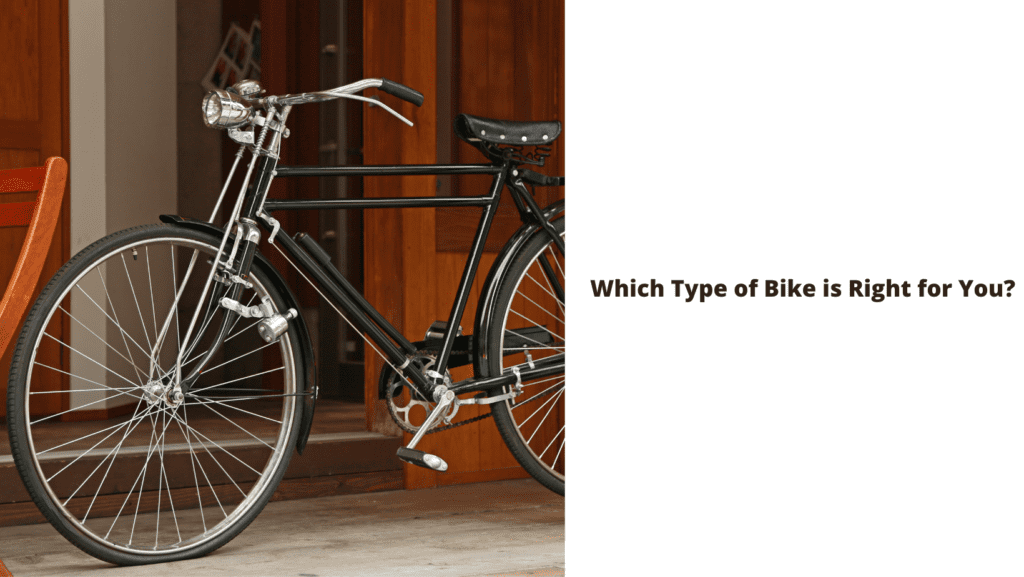
They typically have lighter frames and narrower tires, which helps them achieve higher speeds on smooth surfaces. Hybrid bikes, on the other hand, are designed for versatility. They’re a great option if you want to be able to cycle on a variety of terrain, as they have wider tires that provide extra traction.
If you’re not sure what type of bike is right for you, it’s always a good idea to talk to an experienced cyclist or visit your local bike shop. With a little guidance, you’ll be sure to find the perfect bike for your needs.
Conclusion
Road bikes and hybrid bikes are two of the most popular types of bicycles on the market. While they share some similarities, they also have some key differences.
Road bikes are designed for speed and efficiency, making them a popular choice among competitive cyclists and serious amateurs. They typically have narrower tires and dropped handlebars, which allow riders to slice through the air with minimal resistance. In addition, road bikes are relatively lightweight, making them easier to control on steep climbs and fast descents.
Hybrid bikes, on the other hand, are designed for versatility. They’re a great option if you want to be able to cycle on a variety of terrain, as they have wider tires that provide extra traction. They also typically have padded seats and suspension systems, which make them more comfortable to ride on long journeys.
So, which type of bike is right for you? If you’re looking for a bike that is fast and efficient, a road bike is a good choice. If you’re looking for a bike that can be used on a variety of surfaces, a hybrid bike is a better option.
